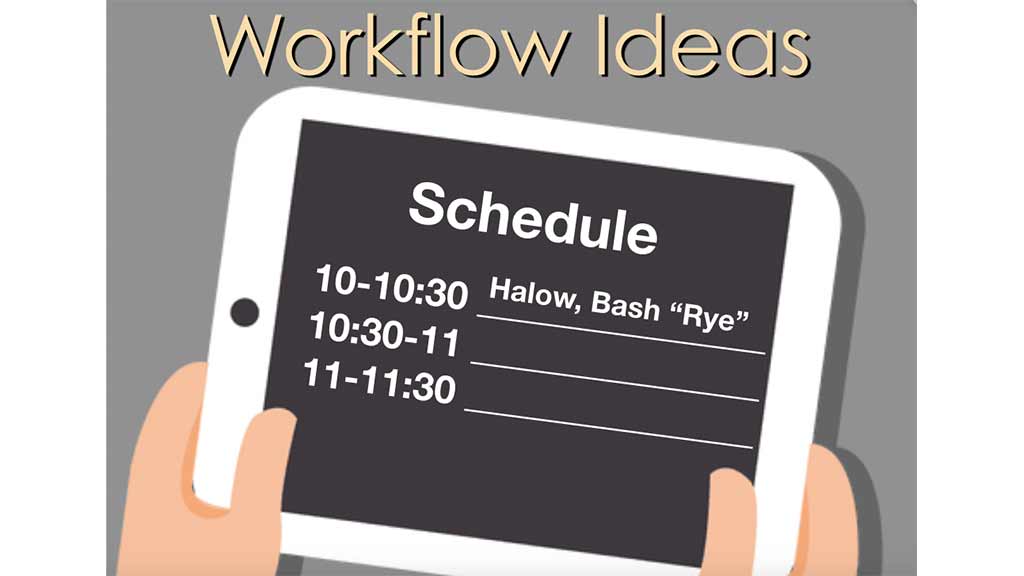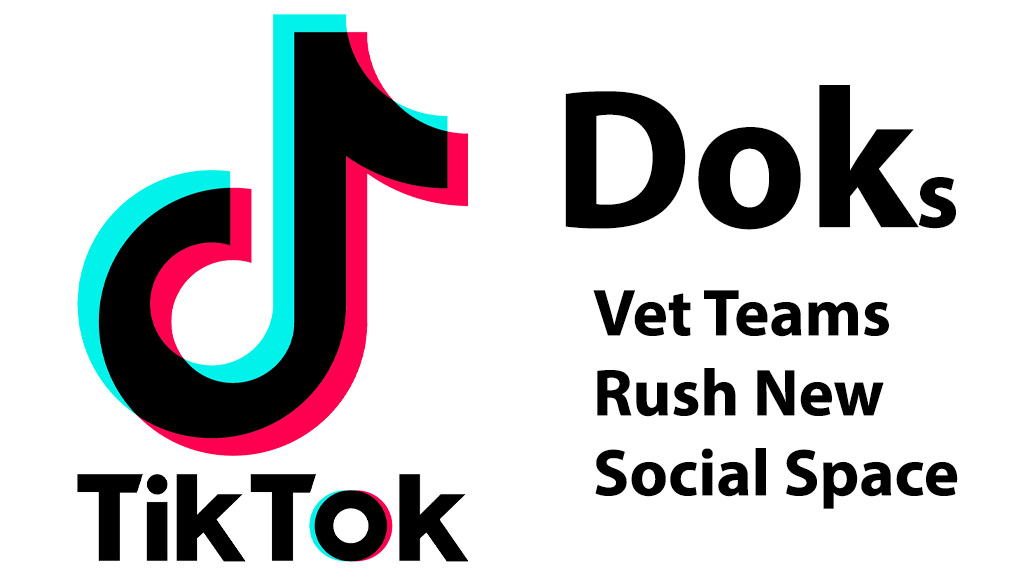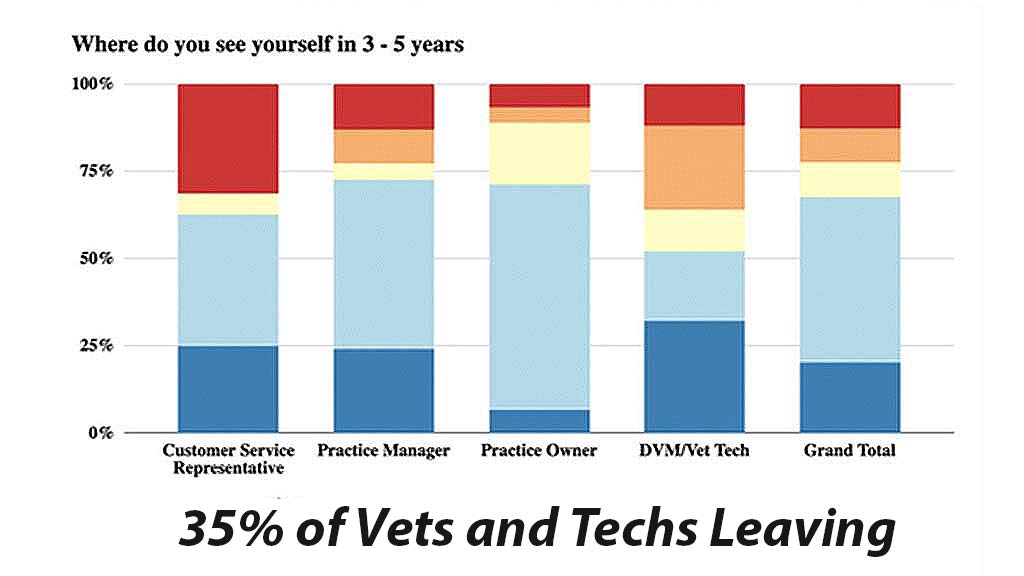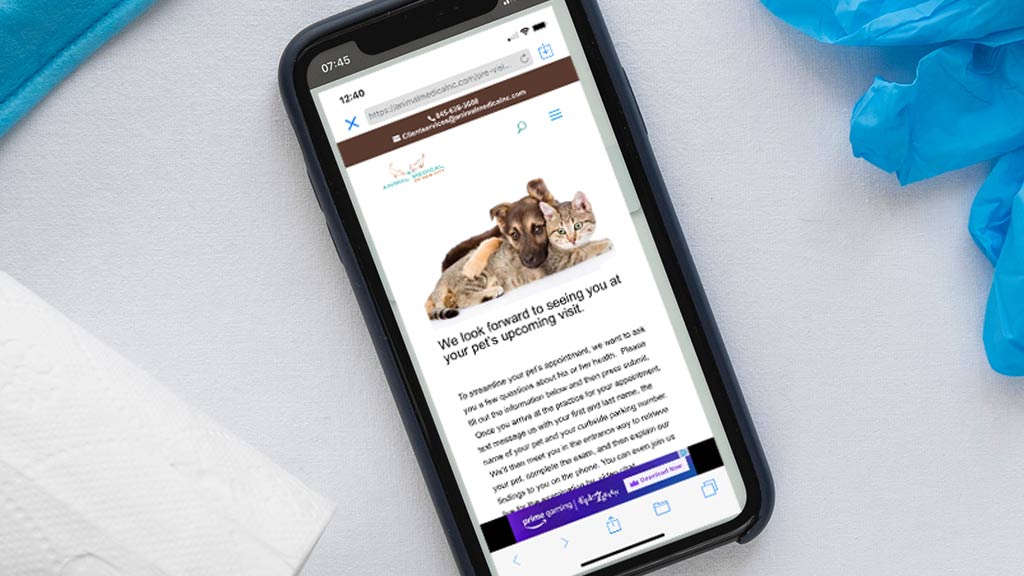They got a manual, a checklist of things they were supposed to know, and four weeks of training from three different team members. So why is it that these employees are still not doing anything right?
I have a question I ask veterinary conference audiences: “How many of you completed a formalized training program at the hospital you work?” Guess how many hands go up? A smattering at best. Most laugh at the question. People call out, “Are you kidding me? I was thrown into the job. It was baptism by fire!” But I have another question for all those laughing, “Then how come you ended up at this audience, a group of the some of the most exceptional leaders and professionals in the business?”
Over the years, I have written chapters and chapters worth of training manuals. At one large practice, I authored thirty-seven in total. Take that in. Thirty-seven chapters of ‘How to Navigate the Client Information Field in Cornerstone’ or ‘Running a Blood Sample in the Catalyst’ or ‘Handling a Euthanasia’. To this day, I’m convinced I’m the only one that read them. Over the years, we have built checklists, assigned personal trainers, given the responsibility over to doctors who believe they can help…in all cases we start out strong, but peter out as flu outbreaks, maternity leaves, call outs and the like take their toll on our ability to stay on schedule. In the end, despite our best intentions, our new hires end up getting thrown into the fire.
I honestly don’t know what to do about it. We hire people with no experience in veterinary medicine because they demonstrate an aptitude and interest in what we do. Still, they have to be given some foundation, but in our line of work, even some foundation is the equivalent of the footprint for the World Trade Towers. The alternative is to hire people with experience, but hiring individuals from other hospitals is also hiring all the idiosyncrasies that led them to leave those previous jobs. Hire fresh and you can mold them in your own way, but good luck getting the mold to set. Hire individuals with experience and all they want to do is break your mold.
I recently lectured at a conference on the topic of training. Afterwards two co-owners came up to me with an urgent petition, “You have to help us. We can’t get anyone to work. We hire individuals with no experience, there’s no one to train them, they either quit in a few weeks or we end up with a crew where our most senior staff member has less than one year on the job. There’s no one that knows the job, there’s not one to train, and it just gets worse.”
I know that scenario. I’ve been in it. It’s nothing short of existential. It is often the reason why weary practice owners finally throw in the towel.
There is no magic Harry Potter wand wave to get your team members trained, no ‘Floatis Fecalis’ spell that will help team members know how to pack up a stool sample and send it to Idexx. But here’s what I got for you. You already have some insight into what works best when trying to get team members to learn. I’m going to validate those thoughts and provide additional ones from my years of watching the training process at dozens of hospitals. I can’t give you all the answers, but I can move you in the right direction. And, as we’ll learn from this chapter, moving a student in the right direction, getting them to be thoughtful about what they are doing and learning, is probably the best any teacher can hope for.
Training Starts at Hiring
Your training is not going to land with all individuals. Firstly, learners have to come to the table able to learn; they have to come to the classroom rested, fed, drug and alcohol free, and supported socially by family and friends. Unfortunately, in the veterinary world, even these basic requirements are not met by all applicants. People lacking these fundamental underpinnings often flock to the veterinary world for the unconditional love they can get from pets. While I’m glad that many of them have found meaningful employment with us, experience has taught me they have trouble delivering a consistent performance. That shortcoming is not reflective of my training skills; but my inability to hire with my head instead of my heart.
Secondly, students are never really turned on by a learning experience unless three criteria are met:
- Students have to have an underlying interest in the material. Failure to teach a first-year veterinary student how to be an excellent customer service representative isn’t a training failure, it’s a hiring failure. Afterall, she didn’t go to vet school for her passionate desire to answer phones.
- Instructors have to want to help their students. They have to like and be curious enough about their charges to identify learning strengths and interests in the individual, and then target education to those areas.
- Teachers have to know how to engage students in the material. Through group work, apprenticeship, and real time learning, wise teachers don’t just expose the students to learning, they immerse them in it.
When training the Mechanics, Underscore the Mission
You’ve heard the expression ‘missing the forest for the trees’, that is to say, getting so caught up in the details that we lose sight of the bigger goals at hand. This is an especially true in our world. There are so many details and emphasis on details that team members get sidetracked from the most important parts of the work: patient and client care, relationships, and the joy inherent in both.
There are two points I’d like to make on this score. Firstly, we spend a lot of time teaching team members how to process clients and patients along an assembly line of care. Not only do we train how to answer a phone, book an appointment, check a client in, take a history, get diagnostics on a patient, and check a client out; we emphasize how to do this so that the next person in line knows what just happened. This requires a lot of training on medical notes, travel sheets, verbal communication, checklists, signaling in the computer, etc. During the course of a typical visit, we tell and retell the reason of why a patient is here and what just happened at least 4 times, often more. Hospital teams have hour-long meetings, not on client relationship building (a skill foundational to business health and job satisfaction), but how to fill out travel sheets, how to alert technicians that patients have arrived, how to indicate in the software that patients are ready for check out and the like. In short, we train team members on the mechanics of patient care, without ensuring that they see how care is anchored to our values.
For this reason, I am not a fan of our cycle of service. Because it requires so many team members, so many people explaining what was done, and so many systems to support it, it is inherently obstructive to our goals of safety, good medicine and client /patient relationships. You can read more on ways hospital teams have ditched this service strategy in favor of a more efficient, enjoyable way to treat patients.
Secondly, our heavy emphasis on procedure ends up inhibiting team members’ natural ability to deliver on compassion as a process. That is to say, we have their heads so deep into the computer working on patient care, that they forget to look up, look at the client, and care. Moreover, by drilling procedure, we aren’t engaging team members’ full mental participation in the process. They end up thinking exclusively with their heads instead of their hearts and missing the bigger, more fulfilling parts of what it means to serve a client or patient.
Fortunately some businesses have figured out how to train, but to keep the torch of the Mission alive, to keep every procedure in the context of process, and to encourage employees’ to serve the Mission, not the manual when delivering care.
Starbucks is a great example. Starbucks needs people to handle cash, run registers, steam milk, grind coffee and dozens of other tasks, but more importantly, they want employees to complete these tasks as an extension of deeper intrinsic motivators. Starbucks articulates these motivators as a pocket-sized version of their mission, three pillars that they identify as Personalize, Connect, and Uplift.
Think how this extra step, the process of thinking about what needs to be done as well as how and why it should be done, informs the hiring process. It begs leaders to think more deeply about a candidate’s work and life experience, the kinds of questions hirers should ask during the interview, and the kinds of responses that point to the better candidate. When you hire for mission, you stack the deck with employees that can learn and want to learn what you have to teach them.
It also invites autonomy because team members have to look at each client and patient exchange uniquely. Yes, they still have to check the patient in, they still have to take a history; but doing so in the context of the mission means that they have to check this patient in, take a history for this patient. That keeps the process alive, stimulating and on point with why you began your business to start with.
How We Are Training
Veterinary Student Insight
I recently worked at a teaching college and observed the students during their rotation: two weeks in radiology, two weeks in cardio, two weeks in surgery and so forth. In each service, students experienced a different set of teaching styles. In one service, the teacher started the day with rounds. Each student had to stand in front of others and present their case to the rest of the professionals in the room. In another rotation, students followed the professor through the day’s casework and were peppered with questions at every turn, “Kevin, which leg do you believe the horse is favoring? Evelyn, in this case, what do we need to think about if we know the patient has been on long-term NSAID use?”
But what was most interesting were my interviews with the students regarding their learning experience. In every case, students told me that their learning was predicated on their relationship with their teacher and the time they had working inside their rotation on specific cases, not on the instruction they received.
I found this illuminating. Some professors put a lot of time and effort into their lesson plans: testing students’ knowledge, structuring daily rounds, and so forth, but that was not identified by the students as the major driver of learning. It was a positive relationship with the instructor and supportive immersion in the work that students felt had the most impact on their learning experience. Their experience is in keeping with studies on successful learning. The teachers that best succeed at getting students to engage with and comprehend a topic are ones who are trusted and who find creative ways of immersing students in the material.
Teacher Versus Student-Centered Learning
Teacher-centered learning is instruction where teachers are the main authority figure and the students are empty vessels into which the teacher pours knowledge.
Student-centered learning is instruction where the students’ interest in the material drives the learning experience and where the teacher is more in the background as a source of safety and support as needed.
There is a lot of research (and contention!) as to which teaching style works best. I’ll leave you to do your own research on the topic, but I’ll share several observations:
- Teaching-centered learning sounds like a good idea, but it’s predicated on having a teacher handy to do the educating. Usually in veterinary hospitals the teachers, really our most experienced employees, are too busy doing the work of receptionists and techs to also work as teachers.
- Teaching-centered education requires enough time to complete the syllabus, time that we usually run out of long before we’re done.
- In most practices, client care representatives are given teacher-centered learning. That is, they are handed a manual or a list of skills they must master, and then they are methodically guided through the list until they’re fully trained (or someone quits and they are thrown into the job). Assistants, on the other hand, are usually provided student-centered learning. They follow more experienced team members around, watch tasks repeated over and over, and then begin to participate in the work they like best or that seems most natural to them.
Of the two cohorts, I believe assistants learn faster. As a bonus, it appears they learn the material in the broader context of the overall client and patient experience. I wish more managers allowed receptionists the same chance to rotate with technicians and doctors in the service experience. I think they would enjoy their education more, learn better, and bond with more employees.
What We Can Learn from Animal Trainers
Why shouldn’t we take a few pointers from animals trainers? After all, we are animals too. Here are the things that animal trainers have learned optimize animals’ learning experience.
Work With The Animal’s Strongest Desires
Is the animal food motivated or especially likes playing with a tennis ball? Just as teachers work with children’s existing interests, smart animal trainers build on what the animal already enjoys doing.
Use Positive Reinforcement
As a refresher, we turn to four kinds of conditioning when training animals, human or otherwise:
- Positive reinforcement: A stimulus is introduced to stimulate behavior (I will praise you when you complete the task)
- Negative reinforcement: A stimulus is removed to stimulate behavior (I will stop nagging you once the task has been completed)
- Positive punishment: An stimulus is introduced to stop a behavior (I will write you up to make you stop the behavior)
- Negative punishment: A stimulus is removed to stop a behavior (I will send to you to bed without supper if you don’t stop talking at the table)
Generally speaking,of the four kinds of conditioning, positive reinforcement tends to be more effective in training animals and people.

An In-person Lunch and Learn For Your Team?
It can probably be fully funded! Find out how you can bring a fresh perspective and a lot of inspiration to your next team meeting! Click for more info.
Training Methods Best Suited for Veterinary Practices
Apprenticeship
If you are lucky enough to hire an individual who is genuinely interested in the business of service, care, and medicine and in whom you see promise, the best way to train is using the apprenticeship method. Having the new employee work alongside a role-model technician or doctor through a process like outpatient care gives the student a finite set of skills to watch and learn. It also exposes him or her, in a very short time period, to many core competencies:
- Procedure in the context of process
- Care in the context of relationships
- Seeing the cycle of service as a means to care, not an end unto itself
When paired with the right individual, apprenticeship teaches skills and culture. It teaches what to do, how to do it, and how to behave while doing it.
Micro-lessons
Microlessons work better than long, dragged out meetings. Stay on the lookout for 5-or-10-minute lulls in the day’s schedule, gather all nearby team members, and teach one skill. A variation on this theme is to use the morning huddle, a brief meeting at the start of each day, as a way to impart one nugget of learning to everyone assembled.
Shout Outs
Every now and then I run into a team leader that loves to celebrate employee success in real time. One tech that I met at a West Virginian Urgent Care facility was like a lifeguard sitting atop a chair poolside, watching, and remarking on all the activity she saw below. “Madeline, great job with restraint on that cat. Pam, you see what Madeline is doing? That is a great technique to learn. Suzanne, if you have a sec, can you offer your expert assistance to Mary with that pug? Everybody, I want to give a shout out to Dr. Martin. Doc very good at being so patient with that client. She was hard to take, but you handled her with compassion and authority. Thank you!”
The few times I have see shout-outs at work in veterinary hospitals have been my favorite visits. We always call ourselves a team, but never really interact or manage as a team. Unlike teams, we don’t train together, we’re not reviewed together, we don’t huddle together, and there is little if any of the positive chatter you hear on the field. Shout outs replicate what coaches do; they let team members know they are being watched and draw the staff into engagement with their work.
Lean into Online Learning
AtDove is just one of many online veterinary training programs and one of my favorites. This subscription-based platform offers lessons on every imaginable topic of veterinary nursing as well as an extensive section on customer care. Having a roster of online learning means that team members can learn whether or not in-house trainers have the time to teach. The also serve as a foundation for team members who are brand new to veterinary medicine.
On Your Feet Lunch and Learns
Lunch and learns are great, but in my experience, it’s hard to hold employees’ attention through all that chewing and sandwich paper unwrapping. I think it’s better to get people up on their feet, minus the Panera, working in groups, and walking through whatever skill you would like them to learn. Walking through the skill, rather than sitting around and talking about it, stimulates more thought and is generally more energizing. Group work is also closer to what the real-life experience is like. Exploring skills with others helps individuals not only learn the skill, but learn how it should be optimally completed in the company of fellow employees.
Getting employees to ideate on their feet, instead of while sitting on their rears, is an approach to problem solving called Design Thinking. You can learn more about the Design Thinking here.
$1000
$1000 referral fee for veterinarian applicants. Sign on bonuses also available. More.
Inside the Training Lesson
Trying to hold the attention of your trainees? Try these proven techniques.
Bring Surprise and Fun to the Learning Experience
You’ve heard a lot about different kinds of learners. That some need to hear a thing, or see a thing, or do a thing in order to remember it. For high functioning individuals however, learning styles is only marginally applicable. For the most part, high functioning people will learn anything they are interested in regardless of how it is packaged.
As a trainer, you should be less concerned if the pupil can learn a thing and more concerned about whether they want to learn a thing. To this end, try games, try writing, try standing, try painting, try joking…try what you need to arouse the interests of your specific students and to engage them with the material. Deemphasize the risk of failure and stoke everyone’s eagerness to win.
Announce That The Next Thing That They Hear Will Be Important
Teachers have found that students are more likely to listen if they are told that the next thing that they are about to hear will be important.
Pause Before You Speak
Silence can be more commanding than shouting when trying to attract the attention of a group. Taking a lengthy pause before you give direction primes the group for listening.
Stop Moving
Standing still commands attention. If you are about to communicate something of importance that you want others to remember, plant yourself on the floor, take a breath, make eye contact with the audience members, and speak.
Observe and Provide Autonomy
Great teachers observe their students in their environment and look for clues as to what interests them. If the student is naturally inclined to play with dolls, then playing with dolls is used as a gateway to learning whatever task is at hand. If the student likes to sit under the desk, a great teacher is likely to allow the student to sit under the desk while learning. Paying attention to what piques the student’s interest and then building on that means that the instructor has a leg up on grabbing the student’s focus.
Optimize The Training Experience
Eliminate Mitigating Circumstances
A big reason why training fails is because we do it when there are external factors mitigating our chances for success or the performance expectations for are team members are unrealistic. Here are the most common examples of each.
The Employee Doesn’t Have Time To Do What You’ve Asked
What we say: “Confirm the client’s email address and phone number.”
What they are thinking: “Yes, I heard you. But are you aware that we had two call outs today at the front desk? I can barely get the fundamentals done, let alone these extra tasks you would like me to complete.”
Takeaway: Make sure that what you’re asking your team members to do is possible given their workload, the support that they have from coworkers, and the tools that they have at hand.
They Don’t See The Need
What we say: “Can you please ask new clients how they found out about us?”
What they are thinking: “Oh my god. Can you believe my supervisor? Can she be any more out of touch? I’m operating like an octopus up here and she’s on my case for not getting referral information for a client. Go back to your office and play solitaire on your phone, lady, or use it to call me when you have a real problem you’re trying to solve.”
Takeaway: Given all the things your employees perceive as needing done, your request may seem very low on the list of priorities.
They Are Getting Pushback
What we say: “Make sure that you charge for an extended visit if the appointment exceeds 40 minutes.”
What they are thinking: “I tried it and I got my head bitten off. I was called every name in the book, most of them not repeatable in polite company. Nuh-uh. I’m not doing that again.
Takeaway: It may be that your team members are trying to do what you’ve asked. They just don’t know how to deal with the aftermath.
They Are Failing
What we say: “If the patient is over 8 years of age, ask the client if they want a senior wellness screen.”
What they are thinking: “These clients are buying their children’s winter coats at Goodwill and you want me to ask them if they want a $200 dollar wellness screen? I mention it and they pretty much laugh in my face. When you ask me to make this recommendation, you make me appear blind, or worse, insensitive to our clients’ needs.
Takeaway: It’s not that your team members haven’t tried, but they’ve tried and failed so many times, all the wind is out of their sails.
They Think It’s Wrong
What we say: “Any patient that presents for euthanasia must be charged for an exam.”
What they are thinking: “But they are hysterical with grief! They’re in tears and the cat has been diagnosed with cancer. I can’t in good conscience ask them to pay for a diagnosis that has already been concluded!”
Takeaway: We want employees to promote our services, but not in the absence of believing in them. Look out for employees that are circumspect about the motives of your protocols or fee structure and then give them the education they need to understand your point of view.
They Don’t Have Support
What we say: “Can you please make sure that before you leave, everything on the checklist is done?”
What they are thinking: “You mean by myself? Because the other yahoos that you stuck me to close with aren’t doing a damn thing.”
Takeaway: Failure of the team many not be the failure of every member of the team. One or two spoilers may be sabotaging everyone else’s best efforts.
No Organization
What we say: “And everyone. Try to keep wait time to a minimum.”
What they are thinking: “You mean by waving a magic wand? How else, pray tell, do you expect us to do that?”
Takeaway: Reducing wait time doesn’t start with individual effort, but with an organized, coordinated effort by all; an effort that must be led by one of the hospital team leaders.
Use Technology
Usually the jobs that you have to remind team members to do over and over again are the ones that people like the least or don’t see as part of their core objective: patient and client care. Why not outsource these responsibilities to outside companies and free up time for your employees to do the tasks that are most meaningful to your identity and the most impactful to your clients and patients? Below is list of some of the jobs that can be best outsourced:
Bookkeeping: Local bookkeepers will be much more accurate and efficient than the receptionist you pull away for an hour each week.
Scheduling: Companies like Vetstoria provide clients a way to directly book their appointment in your software. The software has a proven track record. You can book a free demo.
Check-in, Surgery Admit and Discharge, Medical History: We spend a lot of time training team members to go over the same products and procedures, but we live in an age when all of this can be done well and consistently with technology.
Client Education: We overload new pet owners with too much information on their first visit. Consider sending them links to additional information, written on your website, after the fact. You can also use what’s already been built. Nearly every major professional organization and pharmacy or vet service company that you are currently with have client educational materials that you can for client education. Companies like Pawlicy Advisor take things one step further and do free pet insurance education for your clients. They’ll even supply a lunch and learn to your team to help them to best understand how the service is used.














